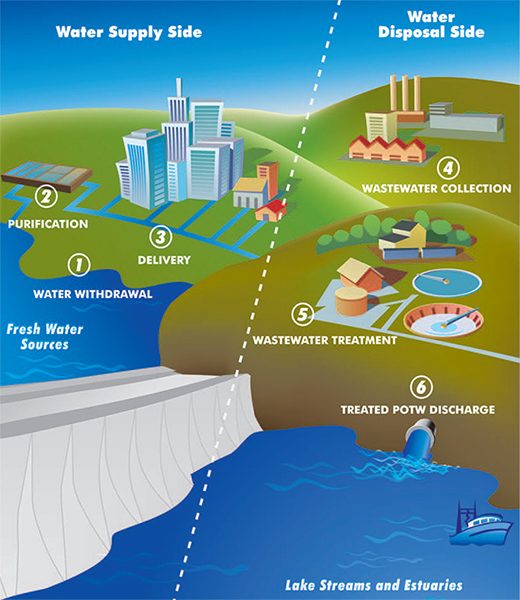Yes. Water that goes down your sink, shower, and toilet go to a large central water treatment plant where it is cleaned and then released into a river or lake. These rivers and lakes are also the same sources for the water treatment plants that take water and clean it again before sending back into the water system that comes back out in your sink, shower, and toilet. This is the water you use to cook, drink, and clean.
This water cycle is nothing new, it has been going on for millions of years. The water we drink today is the same water the aincient Egyptians drank, and the same water dinosours drank millions of years ago.
Nature has it's own water cycle that continually cleans and replenishes our water. Through evaporation and transpiration, condensation, and precipitation (rain), water gets cleaned and refreshed. Our water treatment plants accelerate this process because we would otherwise run out of fresh water in a short time. The Dallas and Fort Worth area has over 7 million people and it takes a lot of water to sustain our amazing cities.




